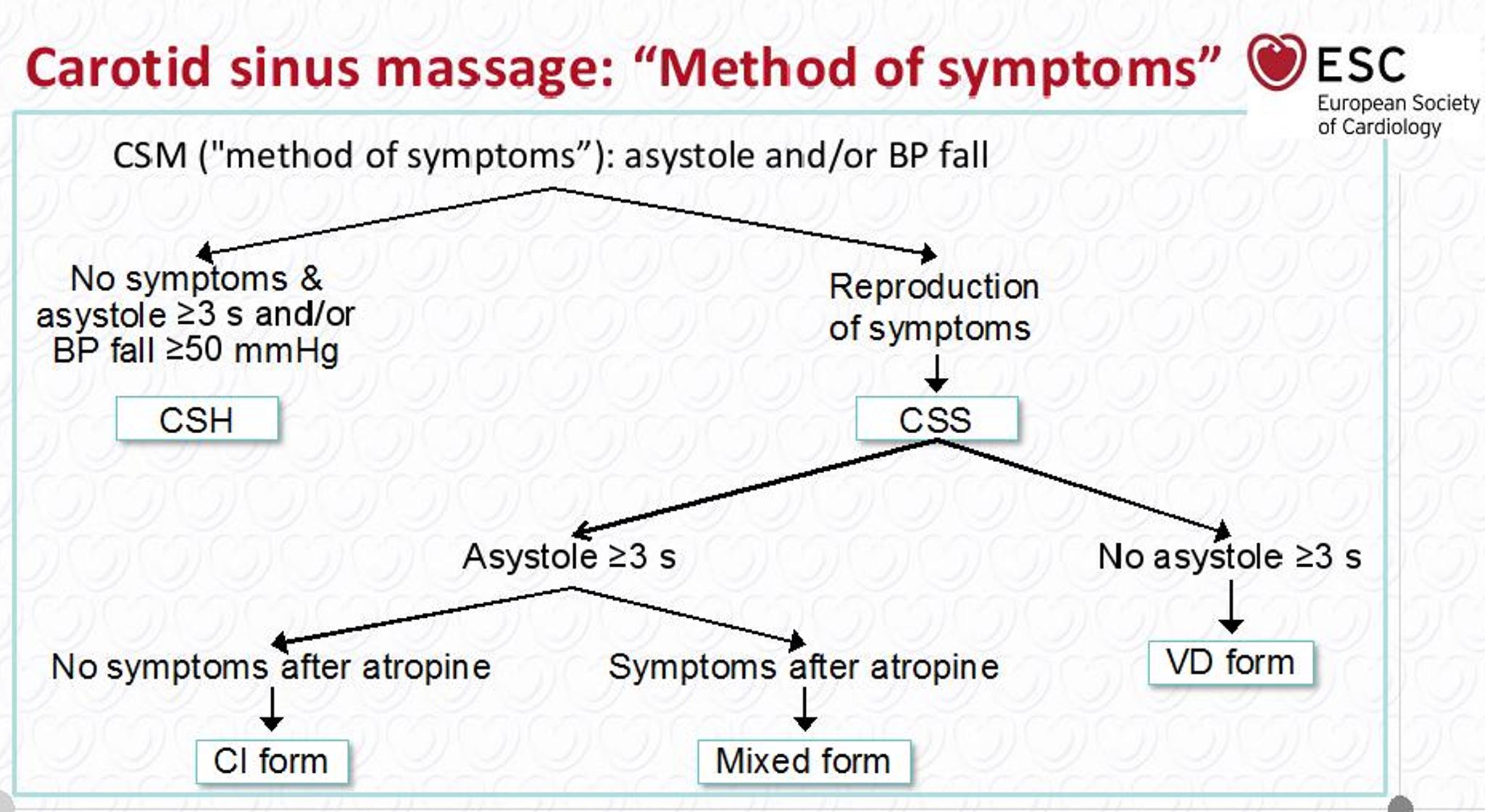Paroxysmal AV block Vagal Maneuvers :Carotid Sinus Massage and Tilt Table testing: Difference between revisions
Jump to navigation
Jump to search
No edit summary |
No edit summary |
||
| Line 1: | Line 1: | ||
==Overview== | |||
Certain maneuvers cuase an increase in vagal surge and may precipitate symptoms in extrinsic vagal mediated AV block. These include carotid sinus massage and tilt table testing. | |||
==Vagal Maneuvers : Carotid Sinus massage and Tilt Table testing== | ==Vagal Maneuvers : Carotid Sinus massage and Tilt Table testing== | ||
*Though not specific,tilt table testing (TT) and other vagal maneuvers such as the vasalva maneuver, eye ball pressure and immersing one's face in cold water can be used in the diagnosis of '''EV-AVB'''. | *Though not specific,tilt table testing (TT) and other vagal maneuvers such as the vasalva maneuver, eye ball pressure and immersing one's face in cold water can be used in the diagnosis of '''EV-AVB'''. | ||
| Line 9: | Line 12: | ||
[[Image:Carotid Sinus Massage.JPG|thumb|center|500px|Carotid Sinus Massage- {{cite web |url=https://www.escardio.org/Guidelines/Clinical-Practice-Guidelines/Syncope-Guidelines-on-Diagnosis-and-Management-of |title=ESC Guidelines on Syncope (Diagnosis and Management of) |format= |work= |accessdate=}}]] | [[Image:Carotid Sinus Massage.JPG|thumb|center|500px|Carotid Sinus Massage- {{cite web |url=https://www.escardio.org/Guidelines/Clinical-Practice-Guidelines/Syncope-Guidelines-on-Diagnosis-and-Management-of |title=ESC Guidelines on Syncope (Diagnosis and Management of) |format= |work= |accessdate=}}]] | ||
==References== | |||
== | |||
Revision as of 22:20, 27 June 2020
Overview
Certain maneuvers cuase an increase in vagal surge and may precipitate symptoms in extrinsic vagal mediated AV block. These include carotid sinus massage and tilt table testing.
Vagal Maneuvers : Carotid Sinus massage and Tilt Table testing
- Though not specific,tilt table testing (TT) and other vagal maneuvers such as the vasalva maneuver, eye ball pressure and immersing one's face in cold water can be used in the diagnosis of EV-AVB.
- The Syncope Unit Project-2 study found an increase recurrence rate in patients who did not undergo tilt table testing. This highlights the utility of TT as a screening test for reflex syncope.
- A positive response is indicated as a marker of hypotensive susceptibility which involves a decrease in both preload and afterload. [1]
- Having said that, a negative test does not rule out the possibility of an extrinsic vagal paroxysmal AV block.
- A carotid sinus massage is indicated in patients more than 40 years of age with syncope of unknown origin compatible with reflex mechanism.
- Carotid sinus sensitivity is confirmed if carotid sinus massage causes bradycardia (asystole) and/or hypotension that reproduce spontaneous symptoms and patients have clinical features compatible with reflex mechanism of syncope. "ESC Guidelines on Syncope (Diagnosis and Management of)".

References
- ↑ Brignole M, Arabia F, Ammirati F, Tomaino M, Quartieri F, Rafanelli M; et al. (2016). "Standardized algorithm for cardiac pacing in older patients affected by severe unpredictable reflex syncope: 3-year insights from the Syncope Unit Project 2 (SUP 2) study". Europace. 18 (9): 1427–33. doi:10.1093/europace/euv343. PMID 26612880.